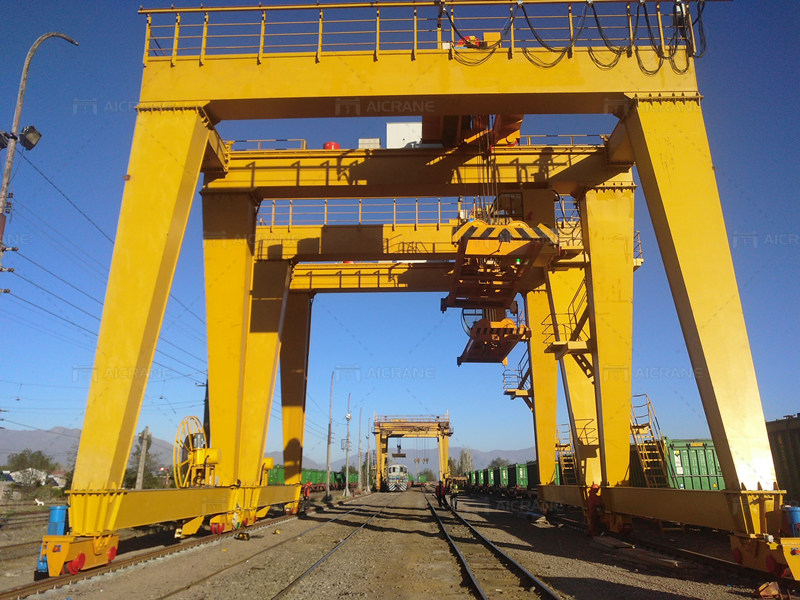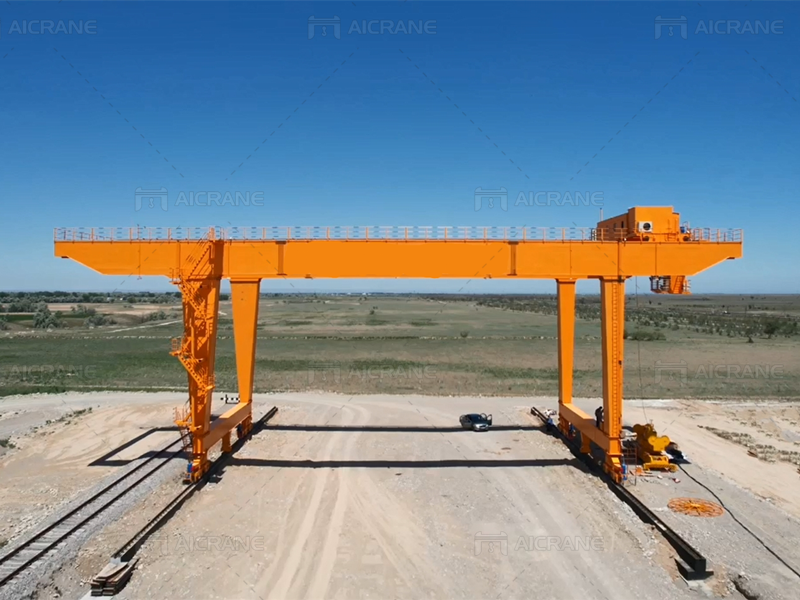The installation of a container gantry crane is a complex and critical process that requires careful planning, precision, and expertise. In this article, we delve into the intricacies of setting up a container gantry crane, offering insights into the installation process, considerations for purchasing a gantry crane for sale, and specific details related to a 50-ton double girder gantry crane.
Understanding Container Gantry Crane Installation
The installation of a container gantry crane involves several stages, beginning with site preparation and foundation construction. The site must be carefully surveyed to ensure it can accommodate the crane’s dimensions and weight capacity. Once the foundation is laid, structural components such as the main beam, legs, and trolley rails are assembled and erected according to the manufacturer’s specifications.
Considerations for Purchasing a Gantry Crane for Sale
Before embarking on the installation process, it’s essential to select the right gantry crane for the intended application. Factors to consider include load capacity, lifting height, span width, and operating environment. Additionally, price is a crucial consideration, with the cost of gantry cranes(козловые краны купить) varying depending on specifications and customization options. For example, a 50-ton double girder gantry crane offers higher lifting capacity and stability compared to single girder designs but may come at a higher price point.

Key Components of a 50 Ton Double Girder Gantry Crane
A 50-ton double girder gantry crane is a robust and versatile solution for handling heavy loads in industrial settings such as ports, shipyards, and construction sites. This type of crane(Двухконсольный козловой кран) typically consists of two main girders supported by steel legs, with a trolley mechanism for horizontal movement along the girders. The hoisting mechanism, powered by electric motors, enables vertical lifting of containers and other cargo with precision and control.
Installation Process and Challenges
The installation of a container gantry crane is a complex undertaking that requires coordination among various stakeholders, including engineers, contractors, and crane manufacturers. Challenges may arise during the installation process, such as adverse weather conditions, logistical constraints, and site-specific obstacles. However, careful planning, adherence to safety protocols, and effective project management can help mitigate these challenges and ensure a successful installation.
Safety Considerations and Compliance
Safety is paramount during the installation of a container gantry crane, with strict adherence to industry regulations and safety standards. Proper training and supervision of personnel involved in the installation process are essential to prevent accidents and ensure the integrity of the crane structure. Additionally, regular inspections and maintenance procedures are necessary to identify and address any potential safety hazards or mechanical issues.
Ensuring Proper Site Preparation
Before the installation process begins, thorough site preparation is essential. This involves clearing the area of any obstacles, ensuring proper drainage, and leveling the ground to accommodate the crane’s foundation. Additionally, soil testing may be necessary to assess the ground conditions and determine the type of foundation required to support the crane’s weight.
Foundation Construction and Structural Assembly
The foundation serves as the backbone of the gantry crane(Aicrane) structure, providing stability and support during operation. Depending on the site conditions and crane specifications, the foundation may consist of concrete footings, piers, or piles. Once the foundation is constructed and cured, structural components such as main beams, legs, and trolley rails are assembled and erected according to engineering drawings and specifications.

Electrical and Mechanical Installation
In addition to the structural components, the installation process also involves electrical and mechanical systems. This includes wiring the crane for power supply, installing control panels, and connecting motors, drives, and sensors. Proper installation of these systems is crucial for the safe and efficient operation of the crane, requiring skilled technicians and adherence to electrical codes and standards.
Testing and Commissioning
Once the crane structure and systems are installed, thorough testing and commissioning are conducted to ensure everything operates as intended. This involves functional tests of the hoisting, trolley, and gantry motions, as well as load testing to verify the crane’s lifting capacity and performance. Any issues or discrepancies discovered during testing are addressed and rectified before the crane is put into service.
The installation of a container gantry crane(Контейнерный козловой кран) is a complex and intricate process that requires careful planning, expertise, and attention to detail. From selecting the right gantry crane for sale to navigating the installation process and ensuring compliance with safety regulations, every step is crucial to the successful operation of the crane. By understanding the key considerations and challenges involved in the installation process, stakeholders can ensure that their container gantry crane is set up efficiently, safely, and effectively, enabling smooth and productive cargo handling operations for years to come.